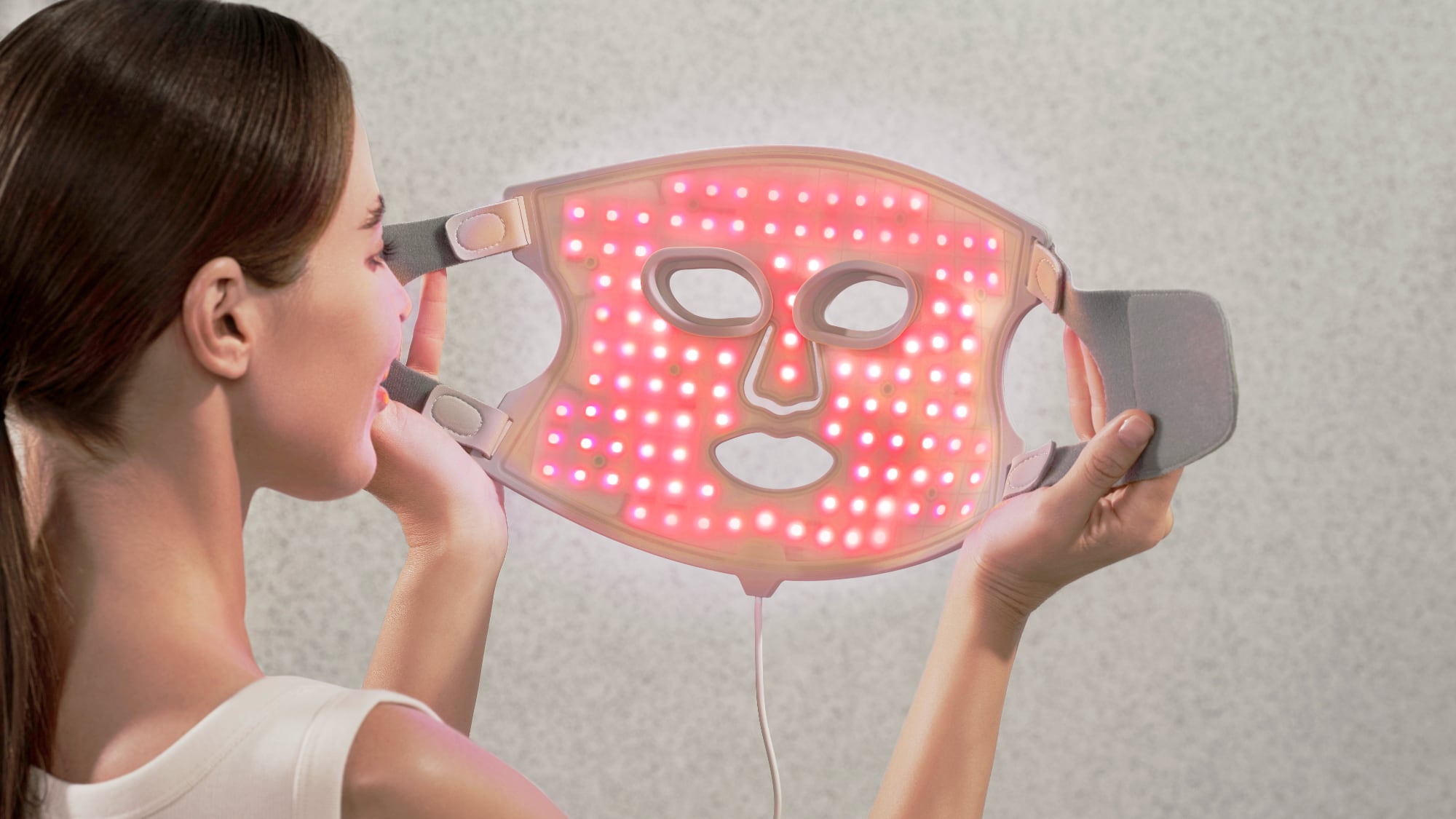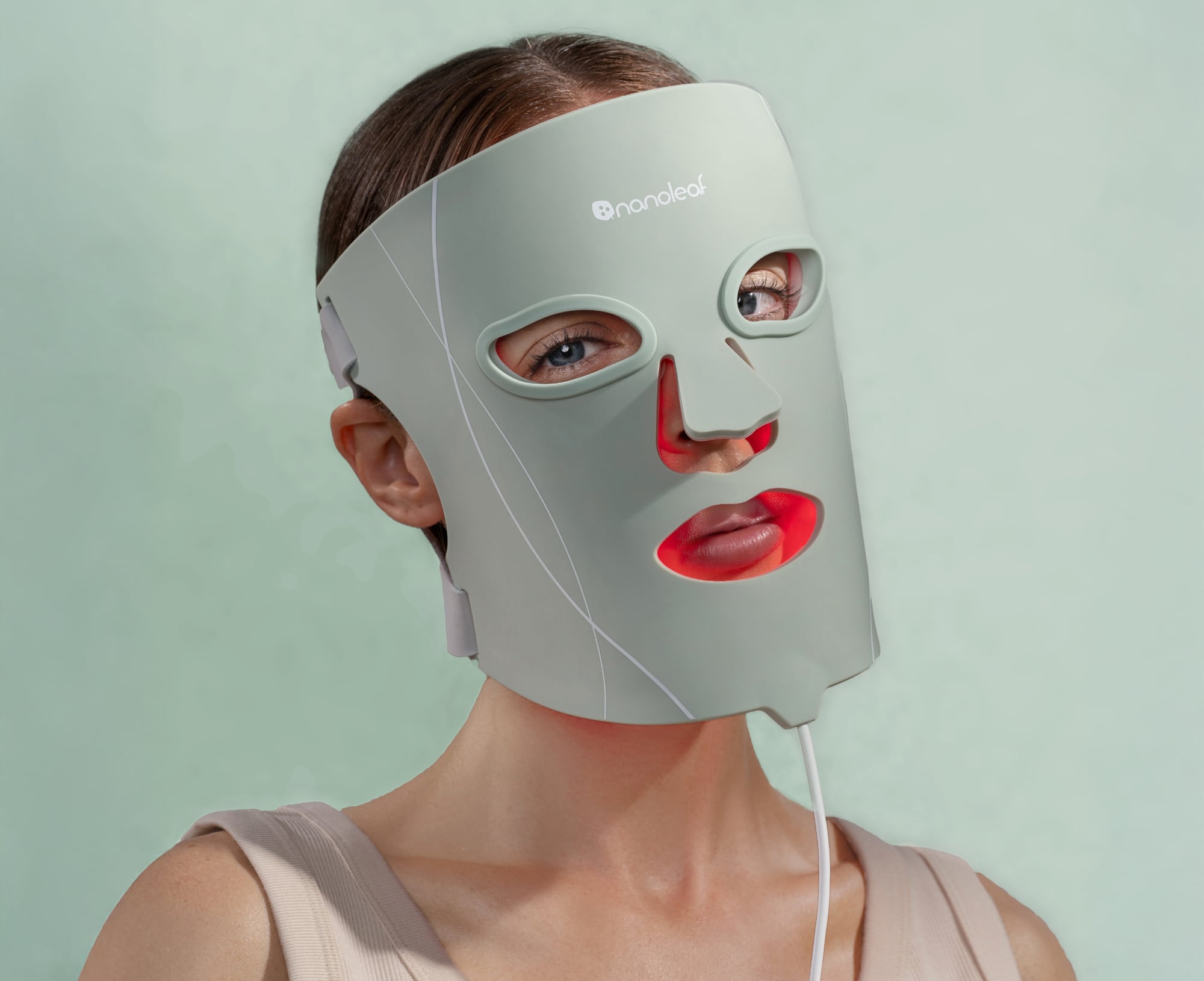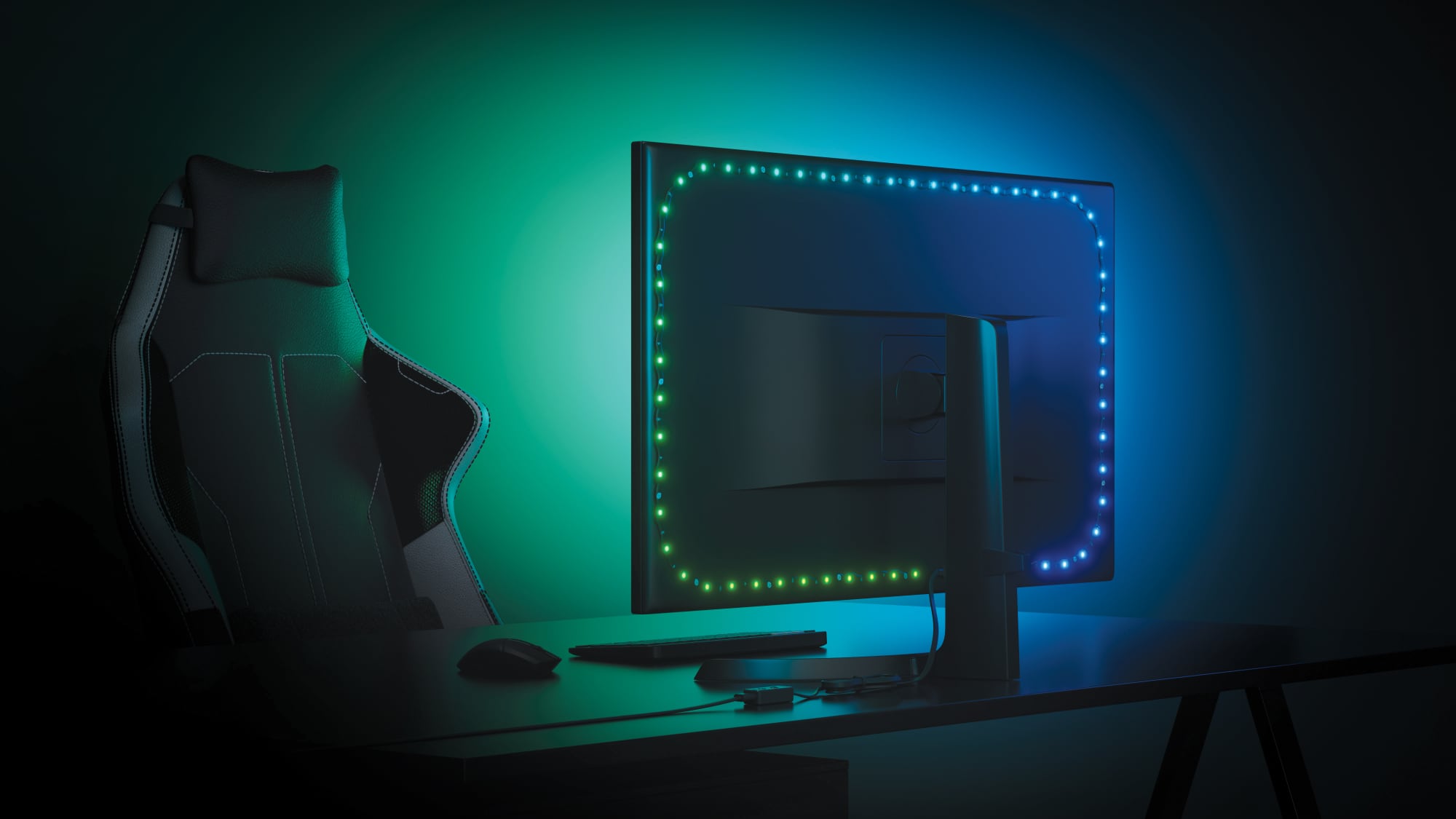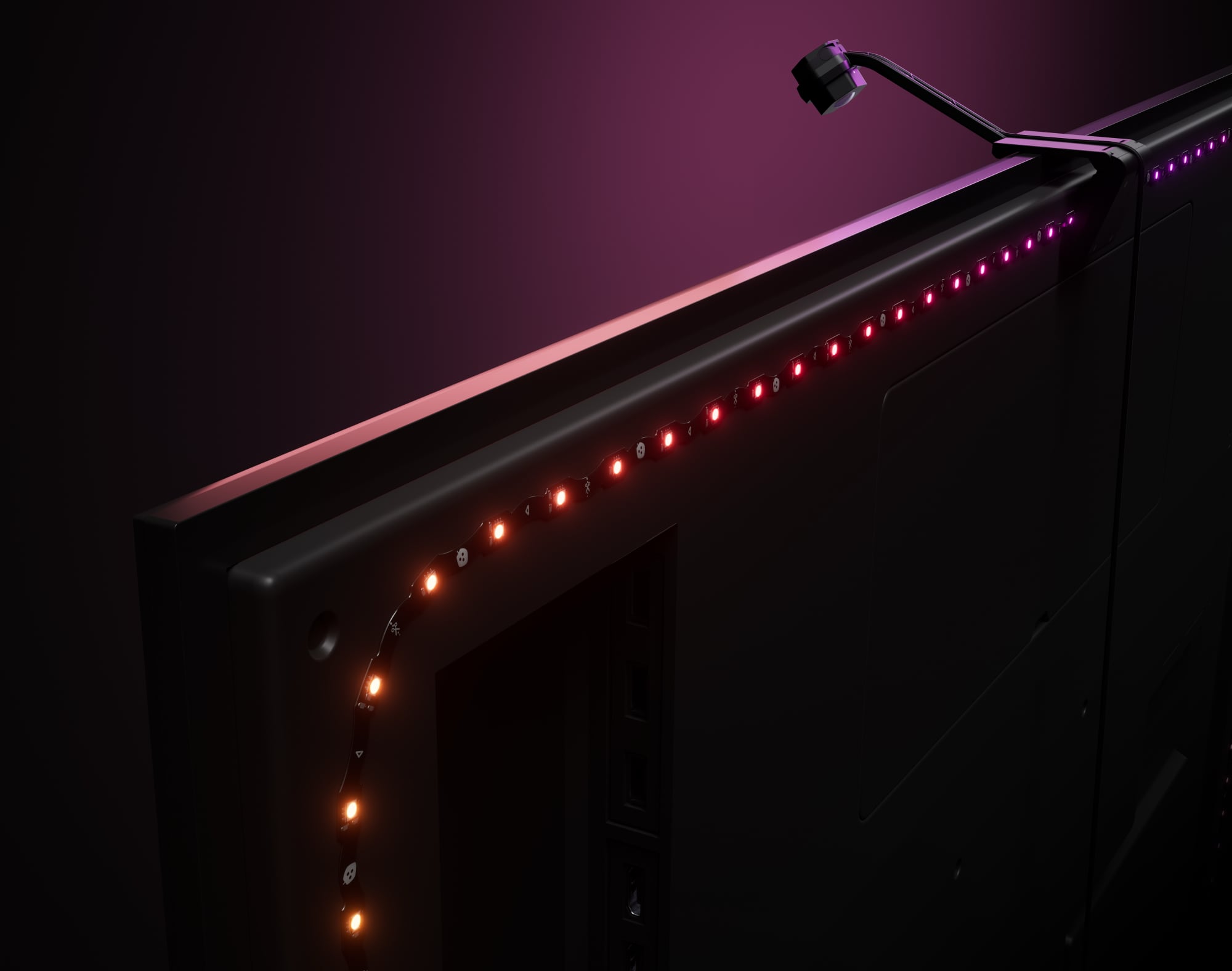It does. If only there were a database of published science paper that had been written on the topic of Photobiomodulation -- like Photobiomodulation (PBM) research - a comprehensive database -- you could peruse the (8298) published science papers and educate yourself. Did you bother to look for any science before making your dismissive comment?Yeah, but until it actually has evidence to prove it's [sic] effectiveness for something, anything, I will treat it as bunk like acupuncture, or religion.
Got a tip for us?
Let us know
Become a MacRumors Supporter for $50/year with no ads, ability to filter front page stories, and private forums.
Nanoleaf Launches LED Light Therapy Face Mask, Floor Lamp, Lightstrips and More
- Thread starter MacRumors
- Start date
- Sort by reaction score
You are using an out of date browser. It may not display this or other websites correctly.
You should upgrade or use an alternative browser.
You should upgrade or use an alternative browser.
Thats the true FaceID, Apple faced to launch like their AI.what have we become
Just like Freddy Krueger!Awesome news, now I can look like a horror movie villain AND have great skin.
Thanks for the chatGPT reply, I was making a sarcastic comment on whether red light is effective or not (no my field and a care factor close to zero on my end).Alternatively, you could look in the Photobiomodulation Datatabase: a Google Docs spreadsheet summarizing the science papers that have been written on the topic. Currently, there are 8298 entries in the spreadsheet. That is far better than trying to find some truth with social media.
IMHO, the most interesting paper is Melatonin and the Optics of the Human Body (2019). Go there and pull down a PDF of the paper. The paper notes the difference between ubiquitous LED lighting and incandescent light. The "inefficient" Edison bulbs kick out about half their energy in red light and near-infrared (NIR) light; LED lights generate all their energy in the visible spectrum. That Red/NIR light is fundamental to the metabolism of our mitochondria: melatonin production in this case. Melatonin is the "first line" antioxidant to address free radicals that may be produced during the citric acid cycle (AKA the krebs cycle).
Getting a fuller spectrum of light than our LED lighting provides is an excellent idea. One way to get this is to regularly get outdoors at sunrise -- and again at sunset. Every day.
LED lighting already contains several different frequencies of LEDs. I fondly hope we add some frequencies so that our mainstream screw-in bulbs contain Red and NIR light. In the mean time, individuals can find specialty screw-in bulbs from the Brand A website, or maybe get a small RLT panel.
I highly recommend some background research on this topic. Act as if you know nothing -- put your pseudoskepticism on the shelf.
A Cleveland Clinic article is a pretty terrible arbiter for truth on any topic.
As are papers paid for by a company with a vested interest in the outcome.
That's a pseudoskeptical dismissal.
I never said IR doesn't have any effects, and the articles I read all said they were uncertain about the why's and what's and more research is needed.
What I am skeptical about is that a company heretofore making lighting all of a sudden comes out with a device that purports to counteract aging effects when available research is unclear on exactly what induces observed effects.
It appears to me to be jumping on the anti-aging bandwagon, much as the cosmetic industry has over the years. It's hard to go broke selling something that appeals to vanity.
Don't do that. My advice is to be a skeptic: do some research before coming to any conclusion. I like the paper Melatonin and the Optics of the Human Body (2019). It not only tells you what RLT is doing, it tells you why we have an increasing need for RLT in the 21st Century. Check out what that science paper has to say.
I did , and as with others it stated the NIR (along with sunlight) has effects; but it in no way provides validation for NanoLeaf's claims, the effectiveness of which is what I question.
That's what the FDA requires for all sorts of therapies.
Because they haven't been proven effective, which is why it is required and sellers of those therapies are careful not to make any medical claims.
Last edited:
nanoleaf has surprisingly been matching govee prices lately, as they did with their outdoor Permanent lights and theirs are actually superiorthe floor lamp price is actually surprising, was expecting $200+.
currently have the Matter Govee one that looks identical for $99
That new Nanoleaf 4D looks great. that's how those strips should have been designed from the start. Now I"m annoyed I bought it last year
This reminds me of whitening toothpaste.
Teeth whitening does work, but the levels of peroxide legally allowed to be included in toothpaste is so small that it doesn’t do anything.
Teeth whitening does work, but the levels of peroxide legally allowed to be included in toothpaste is so small that it doesn’t do anything.
Not approved by the FDA for anything so, so I'm just going to have to refer you back to my previous comment: "Yeah, but until it actually has evidence to prove it's effectiveness for something, anything, I will treat it as bunk like acupuncture, or religion."It does. If only there were a database of published science paper that had been written on the topic of Photobiomodulation -- like Photobiomodulation (PBM) research - a comprehensive database -- you could peruse the (8298) published science papers and educate yourself. Did you bother to look for any science before making your dismissive comment?
Well, I have to get one, because that way I can perform as a robot in a 1950s science fiction movie.
Nanoleaf, known for its popular HomeKit-connected light panels, today announced the launch of several new Nanoleaf devices and an expansion into a new product category.

The new Nanoleaf LED Light Therapy Face Mask is a skincare device that uses LEDs to deliver Near Infrared Light (NIR) to treat skin concerns that include fine lines, acne, and uneven skin tone. Along with red light, which studies have suggested can help with skin firming, Nanoleaf's mask also provides light in other colors that include blue, white, cyan, green, and yellow.
There are seven modes that Nanoleaf says target specific skin concerns, with the mask designed to ergonomically fit the contours of the face. The LED Light Therapy Mask is priced at $150 and it can be pre-ordered from the Nanoleaf website starting today.

Nanoleaf's new $100 Smart Multicolor Floor Lamp has a design similar to the Hue Signe. Like the Nanoleaf light panels, the Floor Lamp connects to the Nanoleaf app and to HomeKit over Matter. It supports more than 16 million colors and offers music syncing and color gradients with Nanoleaf's in-app scenes.

The Smart Multicolor Floor Lamp can be pre-ordered from the Nanoleaf website today.
For PC users and TV owners, Nanoleaf has two new lightstrips that can better fit onto the contours of a screen. A zig-zag design allows it to fit correctly around corners, and the design is more flexible and bendable. The PC Screen Mirror Lightstrip can mirror the colors of games and movies for a dynamic watching experience (no Mac compatibility), and the same is true of the 4D V2 when it's connected to a TV.

With the 4D V2, there is an included camera that picks up the colors on the screen to change the color of the lightstrip in real-time. Both the PC Lightstrip and the 4D V2 for TVs will launch in the second quarter of 2025.

Along with these new devices, Nanoleaf announced Nanoleaf Premium, a software subscription service that is designed for the Nanoleaf Desktop app that works with PCs. Nanoleaf Premium includes Orchestrator for detecting specific songs and creating animations tailored to each track, and it offers Scenescapes, a feature that combines lighting effects and soothing sounds. Nanoleaf Premium is available today and it is priced at $1.99 per month or $19.99 per year.
Article Link: Nanoleaf Launches LED Light Therapy Face Mask, Floor Lamp, Lightstrips and More
Do tell: what papers in the Photobiomodulation Database (8000+ papers) did you find that are paid for by a company with a vested interest in the outcome? Standard protocol papers is for the writers to report conflicts of interest.As are papers paid for by a company with a vested interest in the outcome.
Which papers did you find that had a clear conflict of interest? Which exact ones? Did you do anything at all to see if your "theory" was correct?
Which EXACT science articles from the PBM database did you read? What were their conclusions?I never said IR doesn't have any effects, and the articles I read all said they were uncertain about the why's and what's and more research is needed.
You don't understand the basic mechanisms; I can understand that. A paper like "Melatonin and the Optics of the Human Body" (2019; DOI: https://doi.org/10.32794/mr11250016 ) is a good place to start, and there are no conflicts of interest in that paper. RLT has a positive impact on the function of our mitochondria. If you download the PBM database, you'll see 892 hits on the word "mitochondria". Seek those papers out if you need to further your education.What I am skeptical about is that a company heretofore making lighting all of a sudden comes out with a device that purports to counteract aging effects when available research is unclear on exactly what induces observed effects.
If you don't like media hype over anti-aging, then go to science papers. Simple. Blindingly simple.It appears to me to be jumping on the anti-aging bandwagon, much as the cosmetic industry has over the years. It's hard to go broke selling something that appeals to vanity.
I did , and as with others it stated the NIR (along with sunlight) has effects; but it in no way provides validation for NanoLeaf's claims, the effectiveness of which is what I question.
And what did you do with your questions? Did you ask NanoLeaf what science their products are based on? Did you consult the PBM Database and search for keywords on what would be pertinent research?
Having questions is fine -- as long as you do your due diligence and research those questions. Dismissing the product without doing your homework is lazy.Because they haven't been proven effective
What exact papers led you to that conclusion?
That's the way the FDA plays the game -- heavily influenced by Big Pharma. This is the same FDA that has an RDA of 600 IU/day for Vitamin D3 -- while Fauci admitted he takes 6,000 IU/day. Millions of people ignored those recommendations; even Trader Joes sells D3 in 5,000 IU dosages. Millions of people have a healthy lack of respect for the FDA's silly rules. Did you figure out the nonsense of a 600 IU/day bar during the pandemic? A bunch of your neighbors definitely did., which is why it is required and sellers of those therapies are careful not to make any medical claims.
How do you reconcile your beliefs against the RCTs that are referenced in the 8000+ science papers? Did you even look at any of the RCTs that are referenced?
I don't mind a discussion on the facts. I do mind pseudoskeptical dismissals: pronouncements from someone who hasn't done a shred of work to back up your claims.
How would a true skeptic address the questions you've asked?
I suggest you have a look on Ali Express. At the end of the day, these masks are just a load of LEDs stuck to a piece of plastic. I got my mask (blue/yellow/red LEDs) for around £20 ($25) including shipping and got an LED panel (red/NIR) for under £20 including shipping.Prices are pretty reasonable, especially for the LED mask...
Not convinced about the effect of yellow / blue light (I think "anti-acne" effects need a violet light around 405 nm rather than blue at 460-470 nm), but you need deep red / NIR to give any kind of penetration into the skin.
I've read a load of PBM papers and the most annoying this is the inconsistency of the LEDs/treatments studied. Different wavelengths, different brightnesses of the light, different exposure times - it makes it hard to compare studies and build up an understanding of what wavelegnths work best (and as LEDs tend to have very narrow emission spectra, even two LEDs with emission 10 nm apart could give very different results).
I have been reading your responses and their are thorough. The take on pseudo-skepticism is healthy too.Do tell: what papers in the Photobiomodulation Database (8000+ papers) did you find that are paid for by a company with a vested interest in the outcome? Standard protocol papers is for the writers to report conflicts of interest.
Which papers did you find that had a clear conflict of interest? Which exact ones? Did you do anything at all to see if your "theory" was correct?
On the topic of papers, however, and granted this is still a lazy stance, 8000+ to come up to a conclusion whether it works or not? Ideally it would be like 3? and someone would have shown it even without papers: “hey guys, check this out, I’m a 60yo pal… but if I put my mask over here for 5mins, now look, I’m 50yo!”
Now, I guess those papers all touch on the PBM topic and IR lighting at large, but the point being, when things are obvious there’s less of a need of vast amounts of research trying to discover and explain nano incremental benefits?
Which papers did you find that had a clear conflict of interest? Which exact ones?
(snip)
A paper like "Melatonin and the Optics of the Human Body" (2019; DOI: https://doi.org/10.32794/mr11250016 )
From your referenced paper:
CONFLICT OF INTEREST
Scott Zimmerman is CEO of Silas Inc. which is developing lighting solutions based at least in part on the models discussed in this review. Prof. Reiter has no conflict of interest.
As for the science, you don't seem to grasp the concept that one can agree there is some sort of interaction and benefit, whose mechanism is not yet well understood but exists, and that one can be skeptical of a product brought out claiming it does certain things when the science is not yet settled on causation.
For example, again from your favorite paper:
Melatonin and sunlight are intimately linked. This love/hate relationship is further compounded by the existence of at least two forms of melatonin, circulatory and subcellular. It is proposed that one is produced in response to the absence of sunlight while the other is produced in response to the presence of sunlight. Circulatory melatonin and its source, the pineal gland, operate systemically (endocrine) based on a narrowband stimulus in the violet, blue, and green region of the visible spectrum. It has been proposed that subcellular melatonin is produced in much larger amounts in most of the cells of the body and its functions areautocrine/paracrine in nature (48). To further understand this area of research it is important that disciplines work together
If you want to buy in 100%, that's fine, it's your money.
I've read a load of PBM papers and the most annoying this is the inconsistency of the LEDs/treatments studied. Different wavelengths, different brightnesses of the light, different exposure times - it makes it hard to compare studies and build up an understanding of what wavelegnths work best (and as LEDs tend to have very narrow emission spectra, even two LEDs with emission 10 nm apart could give very different results).
That is a critical point - science is trying to isolate what is effective and determine the mechanisms at play. There is no way yet to ensure any one combination is the right one and works.
The AAD has made the same point as to the difficulty of determining if a DIY device works.
Last edited:
My daughter got a light therapy mask for Christmas and it's done wonders for acne in just a couple of weeks.
One thing that concerns me slightly with the Nanoleaf one is that her one came with goggles to protect her eyes, while the Nanoleaf doesn't seem to.
One thing that concerns me slightly with the Nanoleaf one is that her one came with goggles to protect her eyes, while the Nanoleaf doesn't seem to.
is there a Star Wars variant?
View attachment 2470266
This is the way
Whoa! That's pseudoskspticism! What exact science paper are you talking about? I've never heard of any paper that the face-mask people wrote. AFAICT, they are basing their product on the vast body of science papers -- over 8000 -- in the Photobiomodulation database. Learn it. Know it. Live it.As are papers paid for by a company with a vested interest in the outcome.
Apparently, the Cleveland Clinic copywriter is ignorant of that vast body of research. They should do better. We can do better.
I also noted the Zimmerman paper "Melatonin and the Optics of the Human Body" (2019). Zimmerman notes what has changed in our environment in the last 20 years: Low-E window treatments and LED lighting that only generates photons in the visible spectrum. He notes that OG bulbs kicked out about half their energy in the Red and IR spectrum. What impact does that have? Who researched the risk before going whole hog on these new "efficient" bulbs were mandated on the public?
The mechanisms are pretty well understood at this point in time. You can ask the AIs to tell you: they know what Red and NIR do to our cellular metabolism. Ask the AI for sources, and then read those science papers.I never said IR doesn't have any effects, and the articles I read all said they were uncertain about the why's and what's and more research is needed.
I'll repeat what I said: one Cleveland Clinic article is a lousy arbiter for the truth on any topic. Your reply to my comment made absolutely no sense.
Says who? There is a vast amount of research on what causes the effects. Melatonin production in our mitochondria -- facilitated by Red and NIR radiation -- is established science. More efficient melatonin production means that free radicals are rapidly quenched in the mitochondria. In general, ATP production is more efficient.What I am skeptical about is that a company heretofore making lighting all of a sudden comes out with a device that purports to counteract aging effects when available research is unclear on exactly what induces observed effects.
I don't really care if somebody from the Cleveland Clinic has failed to keep current with that science. I can do my own research, and you can, too.
This is just a repeat of what you've said before. You fail to consider that there may indeed be something new under the sun. Red and NIR radiation are not superficial at all; the light gets to the majority of our cells.It appears to me to be jumping on the anti-aging bandwagon, much as the cosmetic industry has over the years. It's hard to go broke selling something that appeals to vanity.
There are plenty of papers you can look up to answer your question.I did , and as with others it stated the NIR (along with sunlight) has effects; but it in no way provides validation for NanoLeaf's claims, the effectiveness of which is what I question.
Actually, there are a raft of RCTs in the Photobiomodulation Database. Look them up.Because they haven't been proven effective, which is why it is required and sellers of those therapies are careful not to make any medical claims.
Please don't conflate the lack of "FDA Approval" with the lack of scientific evidence.
What I can't tell from your discussion is if you've actually read any of the science on this topic. You can't effectively dismiss these devices unless you do to the work.
FWIW, I think that face masks for RLT are pretty silly. I think using a small RLT panel -- AND getting out in the sun -- are far better options. I fondly hope our government will mandate that we widen the spectrum of our screw-in LED light bulbs. Everybody should benefit from the metabolic benefits available with broader-spectrum lighting.
This face mask ain't the issue. The issue is how we have systematically starved our biology from essential parts of the light spectrum. We can do better.
Last edited:
First, you tell us that your standard is for a device to "prove its effectiveness for something". Next you tell us your standard is "FDA approval".Not approved by the FDA for anything so, so I'm just going to have to refer you back to my previous comment: "Yeah, but until it actually has evidence to prove it's effectiveness for something, anything, I will treat it as bunk like acupuncture, or religion."
Which one is it? If you consult the Photobiomodulation Database, you'll see there are plenty of RCTs proving the effectiveness of RLT.
What we really needed was for the narrow-spectrum screw-in LED bulbs to require FDA Approval. Someone should have had to prove that replacing our incandescent bulbs with narrow-spectrum LEDs had no impact on our health. But that wasn't done. And we now have a vast amount of science showing the need we have for Red and NIR light in our photonic "diet". Consult that vast database for the deets. If you don't want to do that, ask ChatGPT: "is photobiomodulation good for our health". And don't trust the AI: ask it to include sources.
Some people treat new science findings as bunk -- even if there is a gargantuan database of those science findings. It's the religion of pseudoskepticism. More light and less heat, please.
Seems like something I'd expect to see Gwyneth Paltrow hawking on Goop instead of a news article on MR.
Until the FDA approves it to treat something, anything, that’s when it should be a product for treating that thing. Not before, and not because there are some studies saying who knows what. It’s why we have the FDA. Otherwise it’s just all snake oil.First, you tell us that your standard is for a device to "prove its effectiveness for something". Next you tell us your standard is "FDA approval".
Which one is it? If you consult the Photobiomodulation Database, you'll see there are plenty of RCTs proving the effectiveness of RLT.
What we really needed was for the narrow-spectrum screw-in LED bulbs to require FDA Approval. Someone should have had to prove that replacing our incandescent bulbs with narrow-spectrum LEDs had no impact on our health. But that wasn't done. And we now have a vast amount of science showing the need we have for Red and NIR light in our photonic "diet". Consult that vast database for the deets. If you don't want to do that, ask ChatGPT: "is photobiomodulation good for our health". And don't trust the AI: ask it to include sources.
Some people treat new science findings as bunk -- even if there is a gargantuan database of those science findings. It's the religion of pseudoskepticism. More light and less heat, please.
Register on MacRumors! This sidebar will go away, and you'll see fewer ads.


